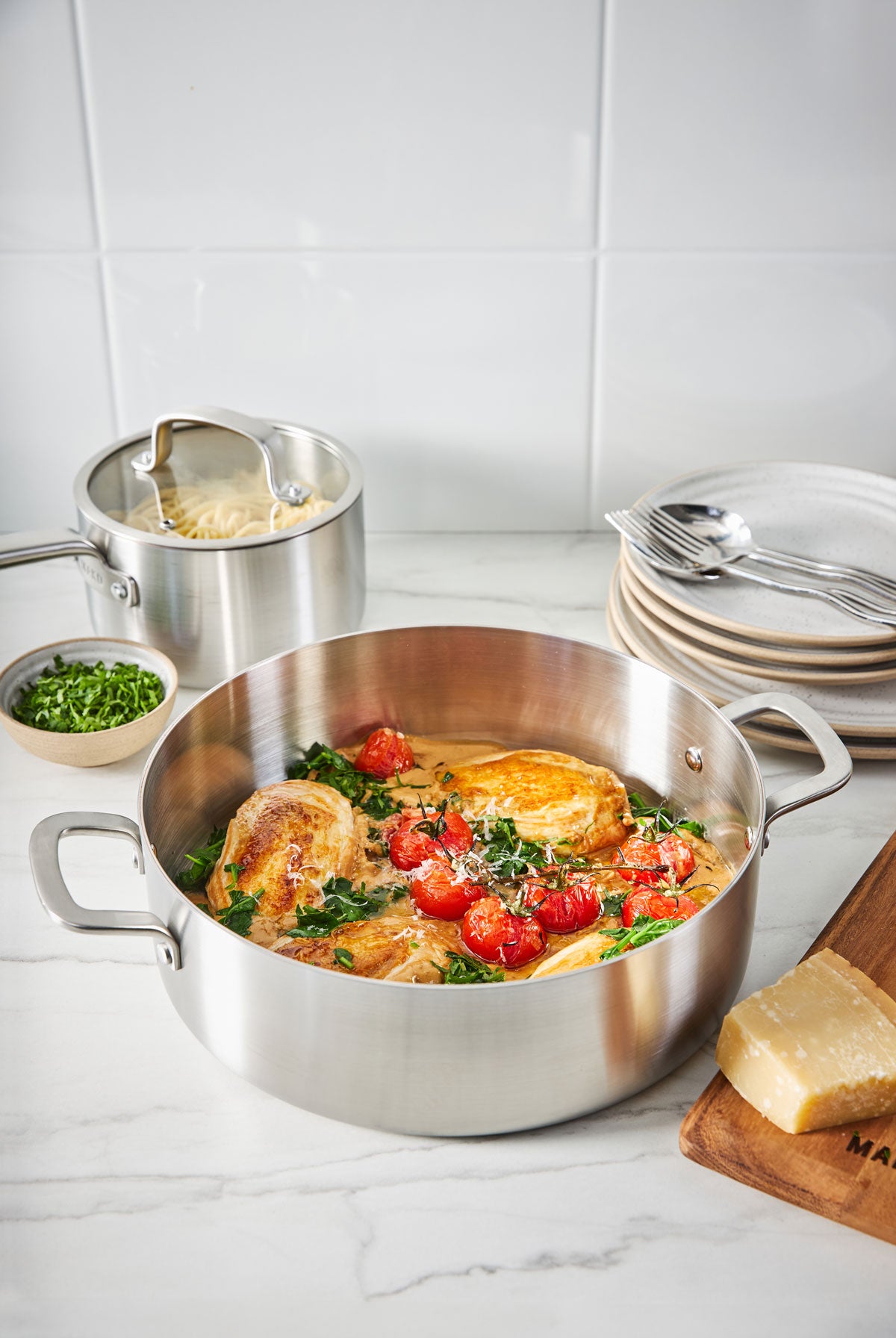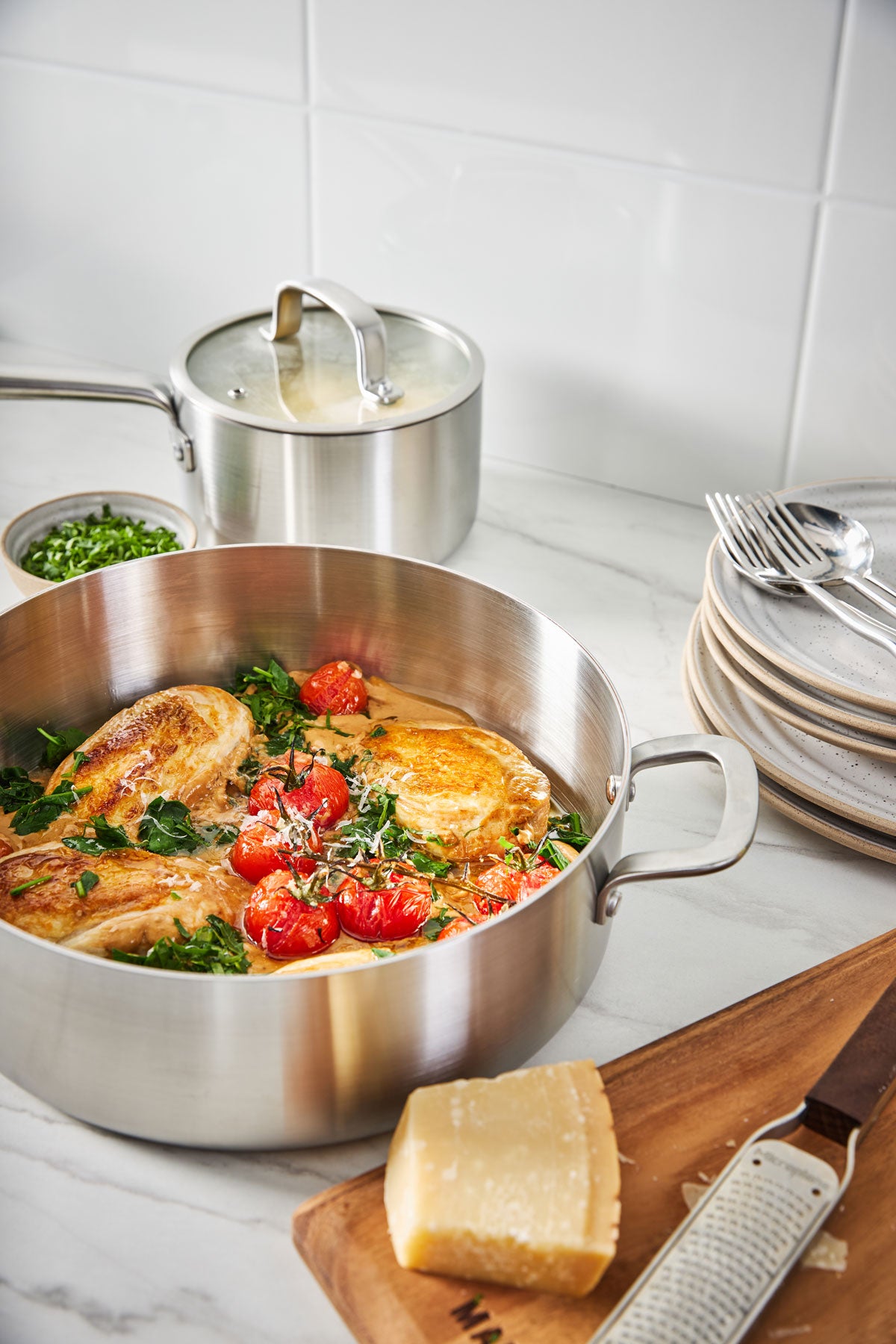

How to make an easy pan sauce
What really, truly elevates your cooking? Sauce, that’s what. The ability to make a sauce for a piece of chicken, fish, a steak, or whatever else is for dinner at yours, brings wow factor to the plate. It finesses and balances, introducing a whole other level of flavour. A good sauce impresses, and who doesn’t want to do that?

What is a pan sauce?
When you sear a protein or caramelise vegetables in a pan, you create tasty bits that form on the pan’s base. In chef speak, these stuck-on bits are called the ‘fond’ and it’s made thanks to the Maillard reaction, which is when a crust forms on browning meats, or when vegetables caramelise, unleashing rich flavour.
Once the protein is cooked and removed, liquid is added to the pan to dislodge those bits (a process called deglazing) and mingle with them. This is simmered to reduce and thicken slightly, creating a deeply tasty sauce.

How to develop the fond
That fond is everything. It’s the heart and soul of a flavour-filled pan sauce and you need the correct frying pan to make one. It needs the right surface to cling to and to develop on, and it also requires decent heat. Use stainless steel or a well-seasoned black carbon steel for the best results. Just note that carbon steel is reactive, so avoid using this material with acidic liquids (citrus juices or balsamic vinegar, for example) until you have a well-seasoned patina finish on your pan.
Making your pan sauce
- Once your protein (or whatever) is cooked, remove it, then pour off all but around 1 tablespoon of oil.
- At this stage, you can sauté chopped shallots in the pan over medium heat for a few minutes, to bolster your sauce.
- Add wine to just cover the base, crank the heat to medium-high, then scrape the base to dislodge the fond. (Use stock if you don't want to use alcohol).
- Cook the mixture to reduce it by about a half; the pan should almost start to look dry.
- Pour in stock; around 1-1½ cups. Homemade stock is preferable as it has more body and flavour.
- Let the mixture boil and reduce by a half.
- Take your sauce off the heat, add about a tablespoon of cold butter, then swirl the pan to incorporate it and give body, another layer of flavour, and a lush, silky texture.
- Or, add a slosh of pouring cream and boil your pan sauce until it thickens a little.
- If your sauce is too thick, add a little more stock.
- Taste, season with salt and pepper, then serve straight away.
Some classic formulas for a pan sauce
For steak: red wine, beef stock, grain mustard, fresh rosemary, balsamic vinegar, ground black pepper.
For chicken: white wine, chicken stock, capers, lemon juice and zest, cream, chopped parsley, chives, thyme or tarragon.
For fish: white wine and vermouth, fish or chicken stock, lemon or lime juice, creme fraiche, dill, chives, parsley.
MORE READING

Tomato Gochujang Rigatoni












